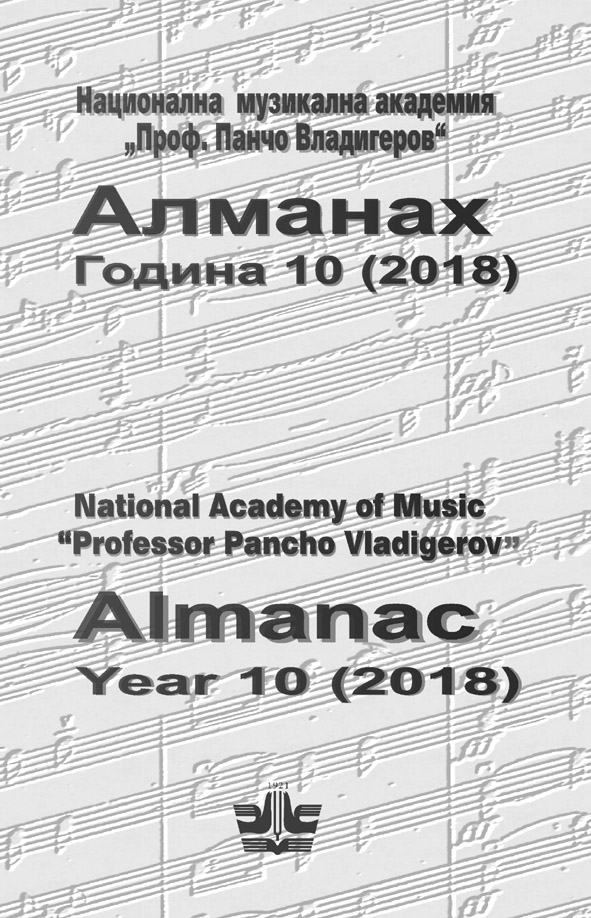Късните клавирни цикли на Любомир Пипков в контекста на цялостното му творчество
Lubomir Pipkov’s Late Piano Cycles in the Context of His Overall OEvre
Author(s): Alexander VassilenkoSubject(s): Fine Arts / Performing Arts, Music, History of Art
Published by: Издателство НМА „Проф. Панчо Владигеров”
Keywords: Lubomir Pipkov; piano cycle; piano miniature; metro-rhythmics
Summary/Abstract: There is an extraordinary idea in the artistic realization of the so called “Periodic Table” of the metro-rhythmic structures in the core of Pipkov’s late piano cycles composing – “Metro-Rhythmic Pictures and Studies”, “Spring Quirks”, “From 1 to 15”, and the unfinished “Children’s Joys”. At the same time, the plays that make up these cycles are directly derived from the composer‘s overall piano style construction, his aesthetic, philosophical and artistic views, his spirituality and sentiment, and are inherently linked to his previous oevre. Important precursors to Pipkov’s late piano work are the “Bulgarian Suite” op. 2, “Youth’s Book” op. 14, as well as the self-published pieces “Pastoral” op. 24, “Ancient Dance” op. 26 and “Prelude” op. 39 (in memoriam of Chopin). It would be fully justified to claim that “Pastoral” and “Ancient Dance” create the outline of two trends, borne respectively from the song and dance genres. These basic genres bring upon a new level of quality, beyond folk imagery; and they receive their most meaningful realization in the composer’s late works – being (respectively) a lyrical piano poem and a concert piece with e character of a ritual dance. In its integrity, Pipkov’s piano style is also shaped by his Concerto for Piano and Orchestra. op. 48, his Sonata for Piano and Violin, Piano Trio, and Piano quartet. We must also emphasize the undoubted imprint of Pipkov’s considerable vocal art (mostly solo voice) on his piano writing and its expressive means. Pipkov naturally structures the music syntax in a manner analogous to the song, in terms of phrasing, breathing and caesurae, constructing the instrumental (in this case, piano) miniature in a manner closest to the vocal one. Intra-cyclical and inter-cyclical intonation, image-characteristics, structural and metro-rhythmic connections in Pipkov’s late piano cycles are numerous and242multidirectional. Of particular interest are the textural, structural and, consequently, gradual performance sophistication, as well as the importance of the late piano cycles as a kind of final synthesis of L. Pipkov’s main artistic directions.
Journal: Алманах - Национална музикална академия „Проф. Панчо Владигеров“
- Issue Year: 2019
- Issue No: 10
- Page Range: 241-248
- Page Count: 8
- Language: Bulgarian

